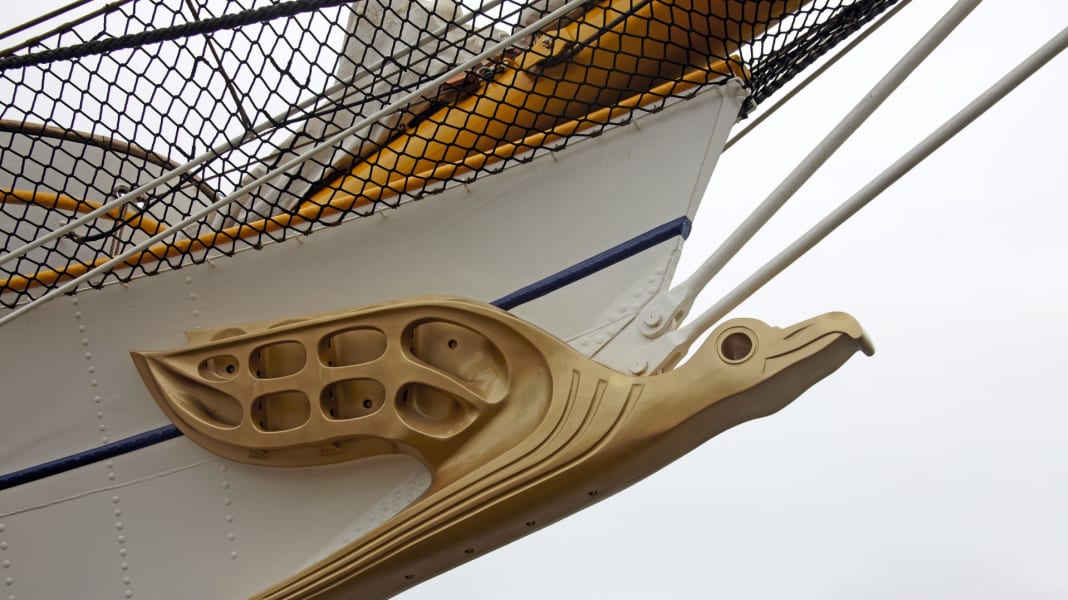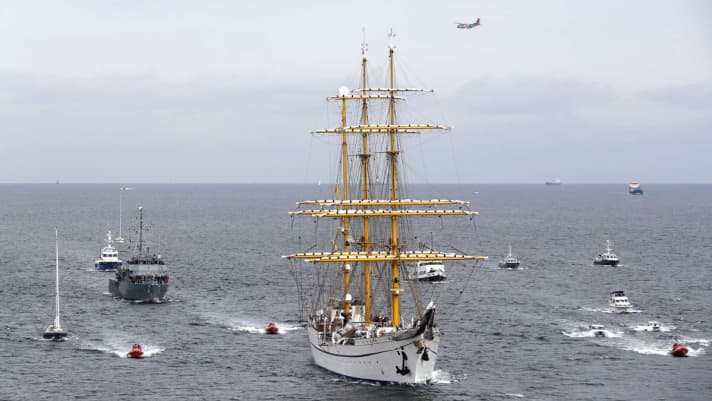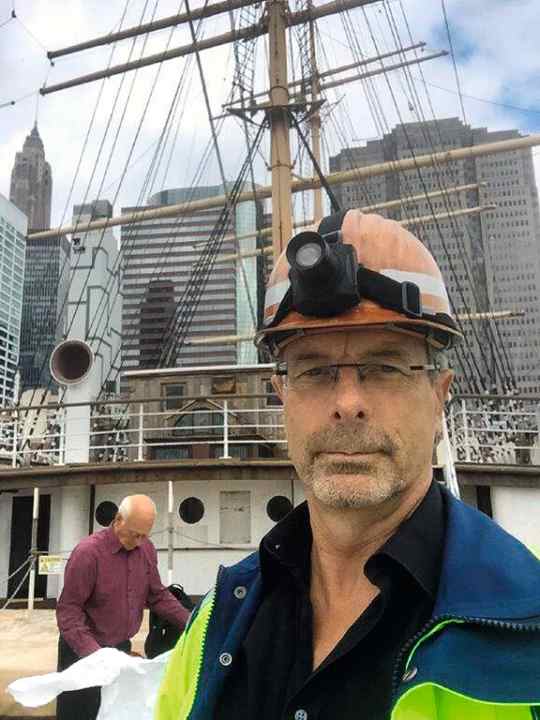Sailing training ship "Gorch Fock": "Gorch Fock" back in service: "It makes you scratch your head"
YACHT-Redaktion
· 05.10.2021

A drama about the cost and purpose of a restoration has come to an end: On 30 September, the "Gorch Fock" was handed back to the navy in Wilhelmshaven. A few days later, she set course for her home port of Kiel, where she arrived yesterday.

The Lürssen shipyard in Bremen had refloated the three-master for the past two years. The small Elsfleth shipyard was originally commissioned with the repairs in 2015. It was supposed to take 16 weeks and cost 10 million euros. However, the shipyard became insolvent, the work dragged on and the costs exploded. The Federal Audit Office blamed the Bundeswehr and the Ministry of Defence. According to the accusation, the refurbishment had not been properly planned and a new build had never been seriously considered. In addition, there were irregularities at the Elsfleth shipyard. The Osnabrück public prosecutor's office is investigating fraud, corruption and bribery. Most recently, environmental organisations filed a lawsuit: The teak from Myanmar used on board was "most likely illegal".
YACHT spoke to Captain Nils Brandt, commander of the "Gorch Fock" since 2014, about the purpose of a sailing training ship in today's world. You can read the interview in issue 22/2021, on newsstands from 20 October.
We also spoke to expert Detlev Löll, 61, about the refurbishment of the "Gorch Fock", the mistakes made by the Bundeswehr and the purpose of a sail training ship. You can find an abridged version of the interview in the same issue; the full interview is available here. Löll is a master shipbuilder and the only authorised tall ship surveyor in Germany. He has helped design twelve tall ships since 1987. He sails a small, wooden sloop privately.

Mr Löll, what exactly did you do on the "Gorch Fock"?
Detlev Löll: We were commissioned to assess the condition of the rigging. We had already completely dismantled it once before, partially replaced it and repaired it several times. I have known the "Gorch Fock" since 1990.
How extensive was the damage?
Minor damage to the rigging. This could easily have been repaired for around 60,000 euros.
The Bundeswehr sees things very differently.
This was the opinion of the German army's own inspection organisation, which made massive mistakes and significantly increased the damage during the inspection itself. The rigging was once built too thick - where the sheet metal of the yard had to have a wall thickness of six millimetres according to regulations, nine millimetres were used, which had now rusted down to seven. Too much, says the Bundeswehr. Still too much, I say. The new rigging then cost over 4 million euros.
Was the refurbishment of the "Gorch Fock" still economical?
Not at all!
Why?
During this time, we built a much larger military sail training ship in Spain, the "Bima Suci" for the Indonesian navy. This took two years and cost 65 million euros, although at 110 metres the ship is incomparably larger than the "Gorch Fock". 135 million euros: That's way too much, even if nobody in the scene was surprised that it was so expensive.
The Bundeswehr says that in Germany and according to our building regulations it is "certainly not" possible to build a new ship at half the price.
The "Bima Suci" fulfils all safety regulations. Of course, upgrading a 50-year-old "Gorch Fock" to current standards is considerably more expensive than building a new ship from scratch.
Why did the "Gorch Fock" have to be refurbished at such great expense in the first place?
Because the Elsfleth shipyard had made a mistake during the previous refurbishment, which led to the steel outer skin corroding massively under the lead ballast. However, the Bundeswehr did not take recourse against the shipyard - instead, it placed a new order. After the order was placed, the ship was intensively inspected by the Bundeswehr, piece by piece, and new orders were added over the years. Later, even the strength of the suspension points of the hammocks had to be recalculated by an engineering firm, even though they had been hanging from the same points for 50 years. Such a procedure is incomprehensible. Commercial shipping companies have a ship completely inspected at the beginning, calculate whether the repair is still economical and then put the detailed order out to tender at a fixed price. The Bundeswehr can't do that.
Instead, everything had to be restored with great attention to detail?
The ship has a riveted construction with overlapping steel plates. For some inexplicable reason, an attempt was made to imitate all the rivet heads at great expense instead of simply welding them together. As a shipbuilder, this makes you scratch your head. Not even listed museum ships are built like this.
But why is this happening?
Because despite having its own cost auditors, the Bundeswehr obviously has no understanding of money. And every shipyard knows that the Bundeswehr always tenders its orders far too small. In order to get the job, they first offer it at a lower price, but then demand a lot of money for each additional hour - 50 then becomes 85 to 100 euros per hour. Nils Brandt really is a very good captain, but captains are not shipbuilders - that's not just the case with the "Gorch Fock". And then the entire crew of such a ship has to be housed and catered for at the shipyard during the entire repair work - even though the navy has barracks. The soldiers can do little there apart from sit around. Nobody except the Bundeswehr would do that.
Does the Bundeswehr still need a sail training ship?
Absolutely! The ship is not there for the soldiers to learn to sail - it's about them learning team building. And that they have to be able to rely on the person next to them in life and death. This is not possible without a sail training ship and direct confrontation with the forces of nature. And it doesn't make sense to charter a tall ship on a permanent basis.
Interview: Jan Zier

